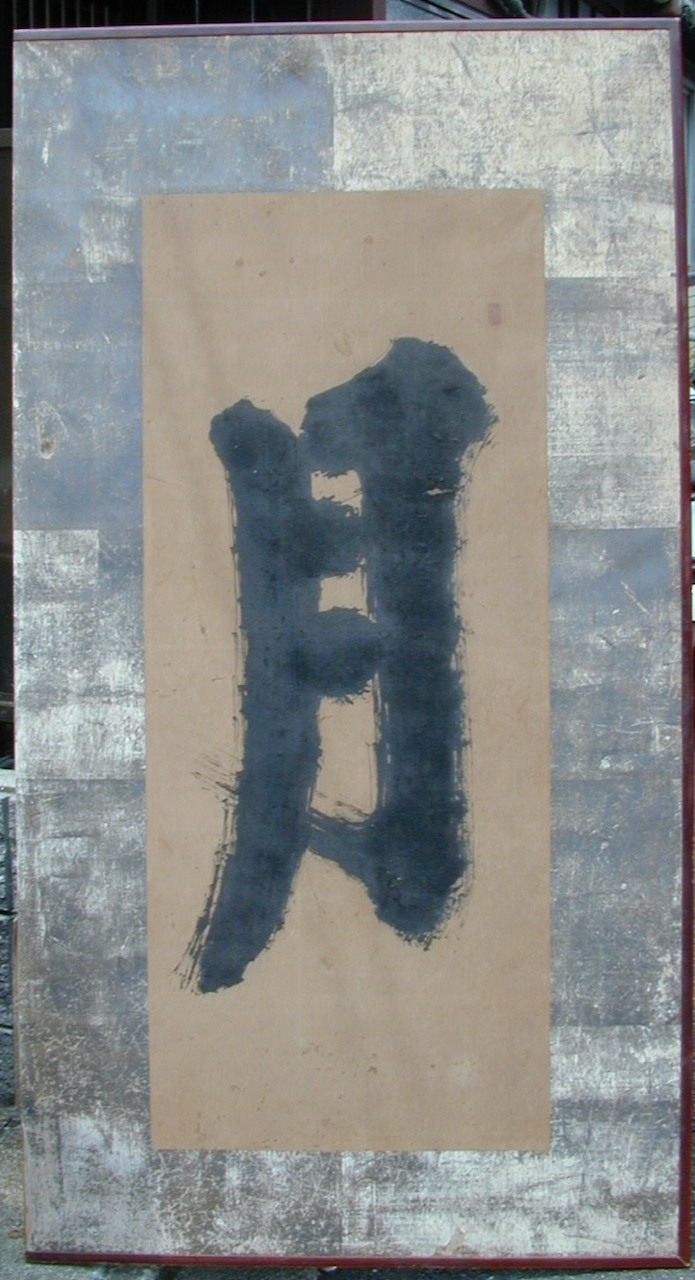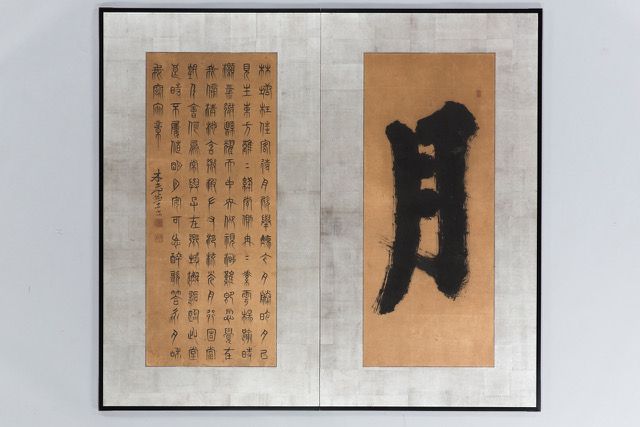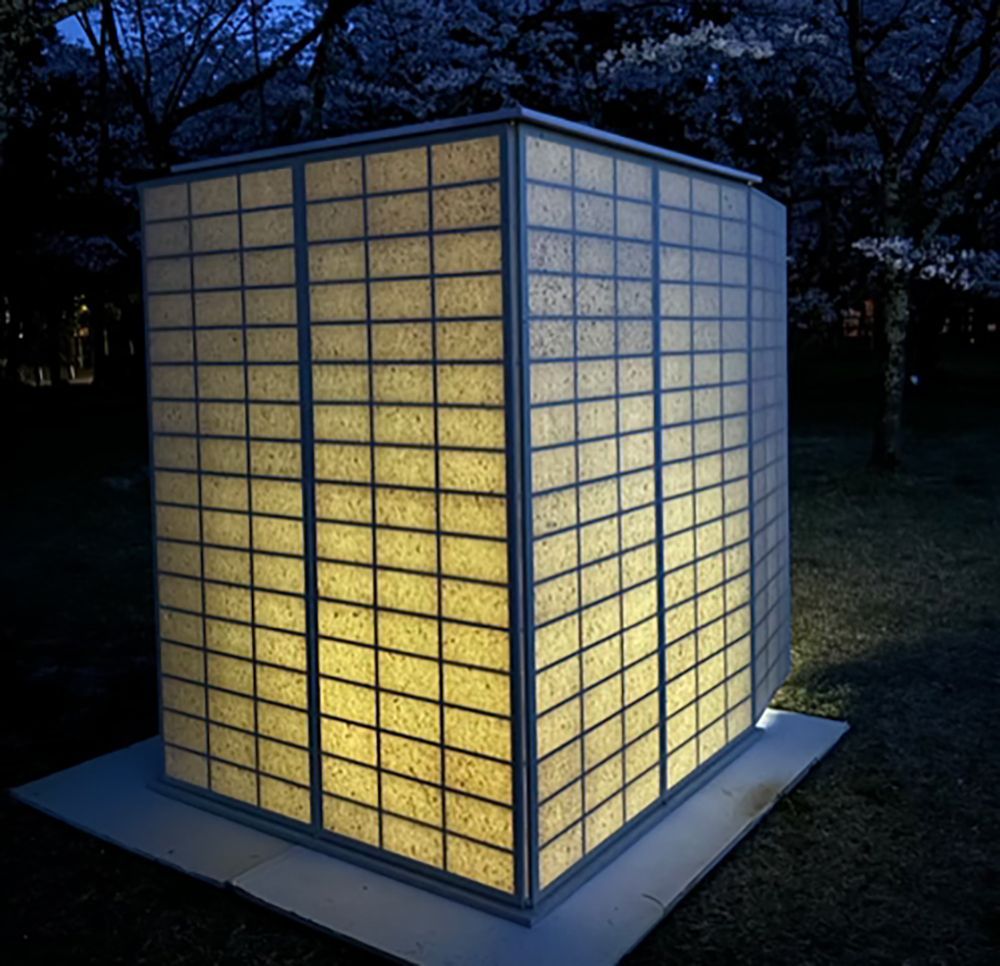Click Image to Enlarge
Write whatever you want about this artwork.
The arrangement of bouzu fusuma (frameless sliding doors) using shike-ginu (a type of textured silk).
It can be assembled in just 10 minutes, allowing you to create a space surrounded by
washi and silk textiles anywhere.
Click Image to Enlarge
ButtonToshihiko INOUE
Paper Mounting・Kyoto
-
Artist's Story
Traditional mounting of scrolls, folding byobu standing screens and fusuma paper doors is a complex, age-old master craft using natural materials, that is often overshadowed by the artworks they present. Inoue is meeting the needs of changing markets by introducing innovative uses for his traditional methodology. His works, created for use both domestically and abroad, include re-purposing the bouzu fusuma* for modern living spaces, easy-to-install and repair washi paper walls and drop ceilings in imaginative configurations, and collapsible paper work-cubicles and tearooms. Inoue aims to both heighten appreciation of Japanese crafts and culture, and work to regenerate the natural materials and techniques for producing them.
*Sliding paper doors featuring a Kyoto mounting style where the wooden door frames are tastefully hidden by wrapped washi paper, creating a crisp, contemporary feel.
-
About the Craft
Traditional mounting of scrolls, folding byobu standing screens and fusuma paper doors are part of a complex, age-old master craft using natural materials such as wood, various kinds of light and durable washi paper, rice glue and woven silk. Screens are made of folding panels that are connected by ingenious paper hinges that allow seamless folding in two directions. Each panel has a wooden outer frame and an inner wooden lattice structure that result in pockets of air, making it light and flexible. Up to ten layers of washi may be affixed to it with a rice paste glue. The front of the screen may have a border of woven silk brocade while the back may be covered with special paper or more woven silk. The screen’s frame is usually coated with black urushi lacquer with ornamental brass details added.
-
Before repair of a (traditionally attributed) Muromachi period folding screen.
ButtonThe scope of work for Kyoto mounting includes the field of repair and restoration. Damaged tears and stains on paintings and calligraphy are cleaned, and items inherited from previous generations are preserved for future eras.
-
After repair of a (traditionally attributed) Muromachi period folding screen.
Button -
Before repair of the mid-Edo period folding screen titled 'Moon'
Button -
After repair of the mid-Edo period folding screen titled 'Moon'
Button -
Button
The repaired Edo period folding screen titled Moon is placed at the center, with a new folding screen on the right panel depicting the full moon's light using silver sand, and the left panel representing the dark night of the new moon with silver and black foil. This arrangement forms the Moon Trilogy.
-
Hiiragiya Ryokan
ButtonA drop-down ceiling made with a light wood frame and Japanese washi paper in removable, replaceable panels. The light on the left side is natural light from a hidden window.
-
Button
Washi has the effect of diffusing light, allowing a soft and warm illumination to pass through, creating a serene and inviting atmosphere.
-
Button
A drop-down ceiling made with a light wood frame and Japanese washi paper in removable, replaceable panels. The light on the right side is natural light from a hidden window.
-
Button
The arrangement of bouzu fusuma (frameless sliding doors) using kōzo-gami (paper made from mulberry bark) dyed with plant-based colors.
-
Button
This collapsible room with exterior washi and interior silk can be assembled in 10 minutes.
-
Button
The exterior side is covered with monode washi (a type of Japanese paper), while the interior side is lined with shike-ginu(textured silk fabric).
-
Button
It can be assembled in just 10 minutes, allowing you to create a space surrounded by washi and silk textiles anywhere.
-
Button
This collapsible room with exterior washi and interior silk can be assembled in 10 minutes.
-
Button
This collapsible room with exterior washi and interior silk can be assembled in 10 minutes.
CONTACT ・ Toshihiko INOUE
Website(English): Kokundo
Instagram: @toshihiko.inoue.56
Japancraft21: Email Us















